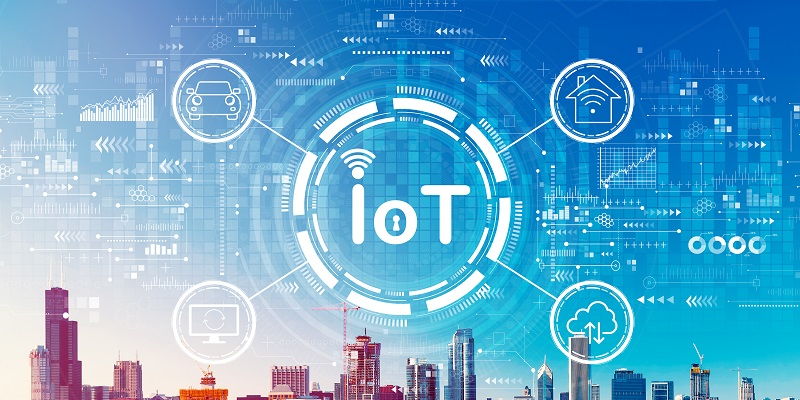In today’s data-driven world, organizations are constantly seeking ways to unlock valuable insights, optimize operations, and make informed decisions. One of the key enablers of this transformation is data integration. By seamlessly combining data from diverse sources, data integration empowers organizations to harness the full potential of the Internet of Things (IoT) and drive meaningful analysis. This article explores the process, technologies, benefits, and future prospects of data integration in IoT.
The Process of IoT Data Integration
The process of IoT data integration involves gathering, consolidating, and transforming data from various IoT devices, sensors, and systems into a unified format that can be seamlessly analyzed. This process is critical for organizations seeking to derive meaningful and actionable insights from their IoT ecosystems. By collecting data from across the IoT landscape, organizations can gain a comprehensive understanding of their operations, customers, and assets.
Key Technologies and Tools for IoT Data Integration
a. Message Queuing Systems and Publish/Subscribe Systems
These technologies play a pivotal role in IoT data integration by facilitating efficient and reliable data transmission between IoT devices and systems. By implementing message queuing and publish/subscribe systems, organizations can ensure streamlined data flow, reduce latency, and enhance the overall performance of their IoT applications.
b. APIs for Standardized Data Integration Interfaces
Application Programming Interfaces (APIs) provide standardized interfaces and protocols for integrating data from various sources in IoT systems. With the help of APIs, devices, platforms, and systems can seamlessly communicate with each other, enabling efficient data exchange and integration.
c. Data Integration Platforms
Data integration platforms offer comprehensive solutions for managing and orchestrating data integration workflows in IoT environments. These platforms simplify the complexities of data integration by providing tools for data mapping, transformation, and synchronization. They ensure consistency and reliability in the integrated data and enable organizations to derive maximum value from their IoT investments.
Benefits of Data Integration in IoT
Enhanced Decision-Making Capabilities
By integrating data from IoT devices and systems, organizations can gain valuable insights that drive informed decision-making. This enables them to proactively identify patterns, trends, and anomalies, leading to improved business strategies, optimized operations, and better customer experiences.
Improved Operational Efficiency
Data integration allows organizations to centralize and harmonize data from disparate sources, which, in turn, enhances operational efficiency. By eliminating data silos and providing a consolidated view of information, organizations can streamline processes, identify inefficiencies, and optimize resource allocation.
Seamless Connectivity and Interoperability
Data integration ensures seamless connectivity and interoperability between IoT devices, systems, and platforms. This interconnectedness allows for smooth data exchange, enabling organizations to create integrated and collaborative ecosystems that drive innovation and enhance productivity.
Real-Time Monitoring Capabilities
Through data integration, organizations can monitor their IoT landscapes in real time, obtaining up-to-date insights and enabling proactive decision-making. Real-time monitoring facilitates timely responses to critical events, enhances predictive maintenance capabilities, and optimizes performance across the IoT infrastructure.
Edge Computing and Fog Computing in IoT Data Integration
Edge computing and fog computing technologies enable local data processing and integration at the device level, reducing the need for data transmission to a central system. This approach minimizes latency, enhances data privacy, and enables faster insights by analyzing critical data closer to its source.
By leveraging edge computing and fog computing, organizations can derive near-real-time insights and reduce the burden on the network by performing data integration and analytics at the edge. This approach empowers organizations to make swift decisions based on accurate and relevant data while optimizing network bandwidth.
Integration of AI and ML in IoT Data Integration
Integrating Artificial Intelligence (AI) and Machine Learning (ML) technologies with data integration in IoT systems enables organizations to automate repetitive tasks and gain valuable insights through predictive analytics. By leveraging AI and ML algorithms, organizations can identify patterns, anomalies, and develop smart models that improve efficiency and maintenance needs.
The integration of AI and ML algorithms in data integration enables organizations to automate processes, reduce errors, and optimize resource allocation. Predictive maintenance based on AI and ML models helps organizations identify potential failures in IoT devices before they occur, reducing downtime and improving overall system performance.
Blockchain Technology for Secure Data Integration in IoT
Blockchain technology can enhance the security and trustworthiness of data integration in IoT. By using cryptographic techniques and decentralized consensus mechanisms, organizations can ensure the integrity and authenticity of data during the integration process, mitigating the risk of data tampering and unauthorized access.
Blockchain provides a transparent and immutable ledger that enables organizations to track and verify the origin and integrity of the integrated data. This ensures the highest level of data security and trust, which is crucial for sensitive IoT applications such as healthcare, supply chain management, and finance.
Federated Data Integration in IoT
Federated data integration allows organizations to collaborate and securely share data from multiple IoT systems, while preserving data ownership and privacy. This approach enables organizations to combine data from different domains, industries, or geographical locations, fostering innovation and enabling cross-functional insights.
Federated data integration ensures that data owners retain control and ownership of their data while enabling secure collaboration. This is particularly important in IoT ecosystems where data privacy and compliance regulations are strict, allowing organizations to maintain compliance with regulations such as the General Data Protection Regulation (GDPR).
Data integration plays a vital role in maximizing the benefits obtained from IoT environments. By seamlessly combining data from diverse sources, organizations can unlock valuable insights, optimize operations, enhance decision-making, improve efficiency, and enable seamless connectivity and interoperability. As technology continues to evolve, future developments, such as advancements in edge computing, AI, and blockchain, hold the potential to further enhance the power and capabilities of IoT data integration. It is clear that data integration is the foundation for organizations aiming to harness the true potential of IoT and drive meaningful results in the digital era.

